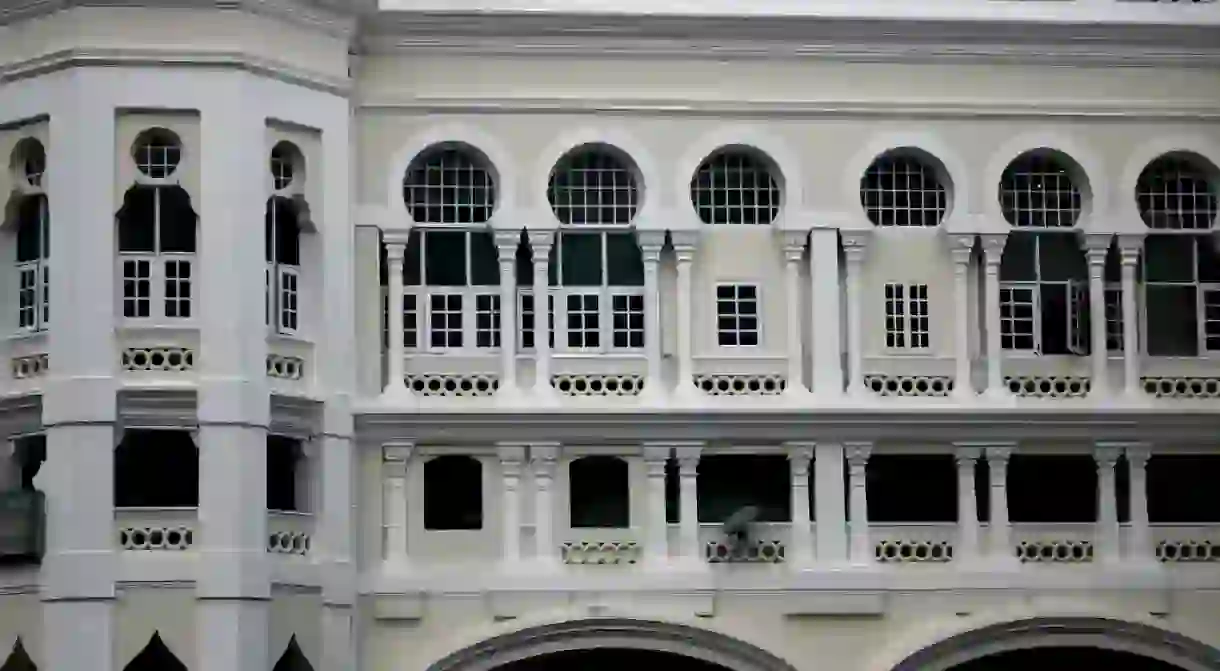10 Unique Experiences You Can Have in Malaysia

“Malaysia, Truly Asia” is Malaysia’s tourism slogan, and it couldn’t be more fitting. The country is practically in the middle of Southeast Asia, making it a longtime strategic and natural meeting point with a multicultural population unlike any other country. We are is excited to delve into the one-of-a-kind experiences you can have in Malaysia.
Enjoy the mix of tradition and modernity
Malaysia is steadily undergoing rapid urban development, but that doesn’t mean the old is out. Hindu and Buddhist temples and old Chinese architecture are prominent in some parts of the country, especially Penang, Melaka and Old Kuala Lumpur. They have kept the urban landscape imbued with history. The incorporation of Malay and Islamic design in new architecture — such as star motifs — has also added to the preservation of Malaysia’s tradition. Take a look around the main town areas; most shop lots along the roads are re-purposed or renovated buildings from the 1950s.
The KL City Gallery is a particularly good example — an old colonial administration building restored to a mini museum and modern tourist center. The KFC outlet along Jalan Larut on Penang Island is also a fascinating salvage project, housed in one of the countless old mansions from the 1800s.
KFC, 52 Jalan Larut, George Town, Pulau Pinang, Malaysia, +60 19-331 0105

A plethora of international food
As Malaysia is a cultural melting pot, cultures and cuisines have blended throughout the country. Globalization and contemporary trends have also brought more foreign cuisines to Malaysia, the most obvious being Japanese food from the early J-Pop boom, and Korean foods from the current K-Pop wave. A stunning variety of food, ranging from luxurious high-class restaurants to cheaper street food, is available.

Local Malaysian food
Malaysia’s food scene has been called one of the world’s most diverse. While the mother roots of these many different cultures are still strongly present, the close proximity and long history they share as Malaysians has brought change and additions to the cuisine in often quite subtle ways, blending each seemingly familiar dish to create something absolutely new and inconsistent. A bowl of laksa can be spicy closer to the Thai border to the north and progressively become more sourish in taste moving down south. The result is a fascinating insight into how even the most basic of ingredients travel and are used differently depending on the area and population, giving each part of Malaysia a personal distinctiveness.

Halal tourism
Being a predominantly Muslim country, Malaysia is one of the best places to go for halal tourism, where the appropriate Islamic way of doing things is taken into consideration. In malls, prayer rooms are often provided for Muslim patrons to ensure that the daily prayer times aren’t missed (if guests can’t make it to a mosque). Most restaurants — even popular franchises — are required to display certification bearing halal regulations, assuring diners that food and products used are in line with Islamic religious preferences (generally meaning pork and alcohol free). Segregation by gender remains quite lenient in Malaysia, as many Malaysians of all religions move about in family units.

Multilingual conversations
In conversations between true blue Malaysians, expect two or more languages to be used in a normal conversation, regardless of the speakers’ mother tongue. Quite often, phrases from other languages are mixed, especially when people from different cultural heritages converse. With exposure to the national language Malay and the necessity of learning English, almost every Malaysian is naturally bilingual or even trilingual. It’s always interesting to find new ways of expressing familiar feelings, and Malaysians seem to like doing so.

Cultural festivals all year round
Many days of the year are dedicated to religious and cultural celebrations in Malaysia. Hindu celebrations like Thaipusam; boisterous and lively Chinese New Year festivals; the nationally observed month of Ramadan, where breaking the fast at food markets is a favourite activity; the elaborate Christmas decorations in the malls: all of these are celebrated vivaciously in Malaysia.

The affordable lifestyle
Kuala Lumpur isn’t as expensive as its world-class services and attractions may lead one to believe. Many activities are cheap, or even free of charge. Food is very affordable, with roti canai as low as RM1 (US$0.25), a bowl of curry mee available for RM6 (US$1.40) and the national dish, nasi lemak, also generally available for RM1. Higher-class restaurants and add-ons may bring the prices up, but rest assured that you will always be able to find something affordable and good quality in Malaysia.

Varied landscapes
Paddy fields, rainforested hills, island beaches and mangroves, cool breezy highlands, tea plantations, cacti and palm oil and rubber plantations, strawberry greenhouses, limestone formations, city valleys, rural ‘kampung‘ villages… Malaysia’s landscape is very diverse. From underground caverns to the high peaks of Mount Kinabalu in Sabah and the modern towers of KL, cross-country travel is full of interesting differences.

Tradition and culture are still a strong part of life
It doesn’t take much observation to notice how the people of Malaysia still stick to their roots. Chinese prayer alters are everywhere, as is the unmistakable smell of Indian incense and the sound of Muslim prayers. Many old habits are still practiced, both in rural and urban areas. Even food is cooked according to traditional methods, keeping distinctive flavors alive.

The history is everywhere
With so many cultures and traditions shaping Malaysia, there’s a lot of history to discover. Learn about how the Nyonya Peranakan people were formed through a blend of Malay and Chinese cultures, and how traditions passed down from ancestors in other lands took on new life in this multicultural sphere. Many sites survive from the pre-Independence era, especially places like Malacca, Penang and Kuala Lumpur. Some historical buildings reflect cultural and religious pride, such as the Blue Mansion, the Sri Mahamariamman Temple and the majestic Crystal Mosque.














